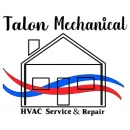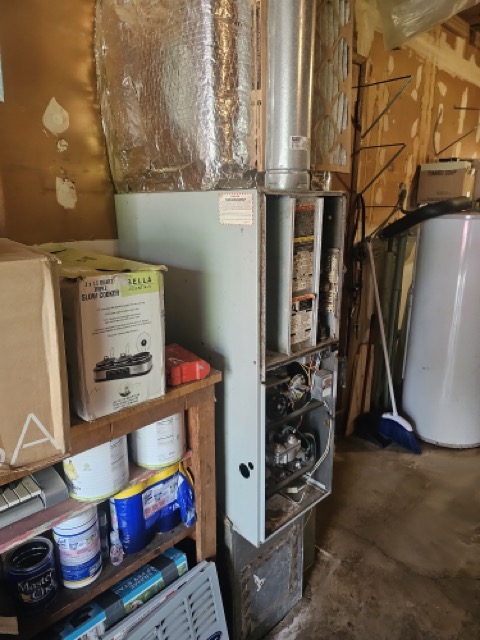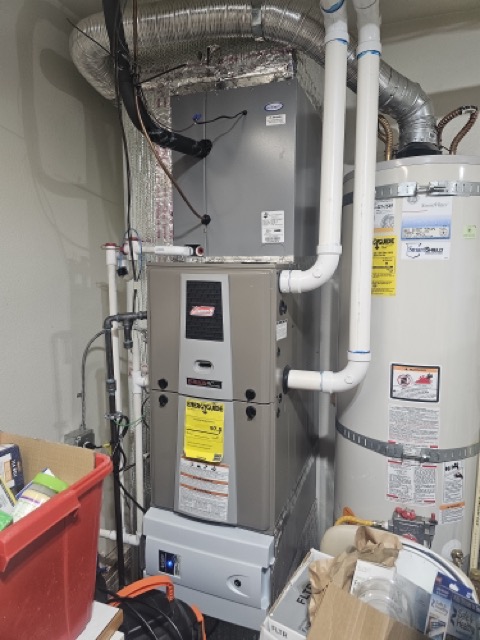The Dangers of a Cracked Heat Exchanger: Protect Your Home from Carbon Monoxide
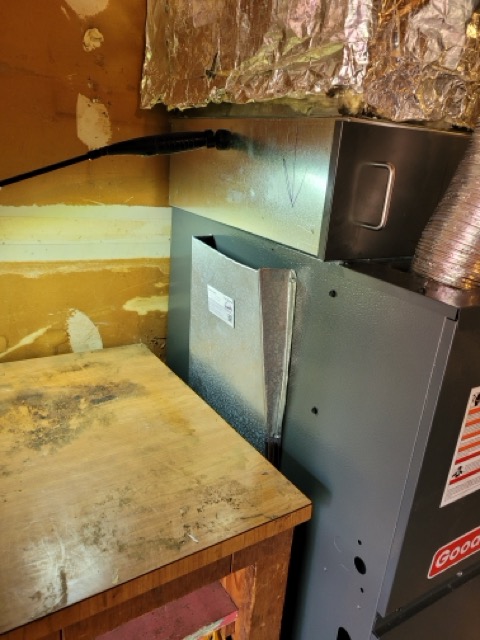
Don't Ignore Your Heat Exchanger
Your heating system is essential for keeping your home comfortable during colder months, but a hidden danger could be lurking inside your furnace: a cracked heat exchanger.
While this component is crucial for transferring heat safely, a crack can lead to a serious and potentially deadly hazard—carbon monoxide (CO) leaks. Understanding the risks associated with a cracked heat exchanger and taking steps to detect and prevent issues is critical to ensuring your family’s safety.
This guide delves into the dangers of carbon monoxide, the role of a heat exchanger, and how to protect your home from CO poisoning with professional heat repair.
What Is a Heat Exchanger and Why Does It Matter?
A heat exchanger is a key component of your furnace that transfers heat generated by combustion to the air circulated through your home. It ensures that harmful byproducts of combustion, such as carbon monoxide, stay contained and are safely vented outside. However, if the heat exchanger becomes cracked or damaged, it can allow CO and other toxic gases to leak into your home.
Why Do Heat Exchangers Crack?
Heat exchangers are subject to intense heating and cooling cycles during normal operation. Over time, this constant expansion and contraction can weaken the metal, leading to cracks. Factors that contribute to cracking include:
- Age of the System: Furnaces older than 15 years are more prone to cracks due to wear and tear.
- Poor Maintenance: Lack of regular inspections can allow small issues to worsen over time.
- Overheating: Restricted airflow caused by dirty filters or blocked vents can cause the furnace to overheat, increasing stress on the heat exchanger.
If your system is over 15 years old, it’s essential to have it inspected regularly by a professional HVAC technician to detect and address any potential issues with heat repair before they become hazardous.
Understanding Carbon Monoxide and Its Dangers
Carbon monoxide (CO) is a colorless, odorless, and tasteless gas produced as a byproduct of burning fuel. While it’s undetectable without specialized sensors, its effects on the human body and air quality can be devastating.
How Carbon Monoxide Affects the Body
CO is particularly dangerous because of how it interacts with the body’s oxygen supply:
- Binds to Hemoglobin: Inhaled CO enters the bloodstream, where it bonds to hemoglobin in red blood cells. Unlike oxygen, which cycles through the body once, carbon monoxide cycles eight times, crowding out oxygen and depriving cells of the vital supply they need.
- Displaces Oxygen in the Blood: Because CO binds more strongly to hemoglobin than oxygen, it prevents oxygen from being delivered to tissues and organs, leading to symptoms like headaches, dizziness, nausea, and confusion.
- Cumulative Effect: Even small exposures over time can build up in the bloodstream, causing serious health complications or death.
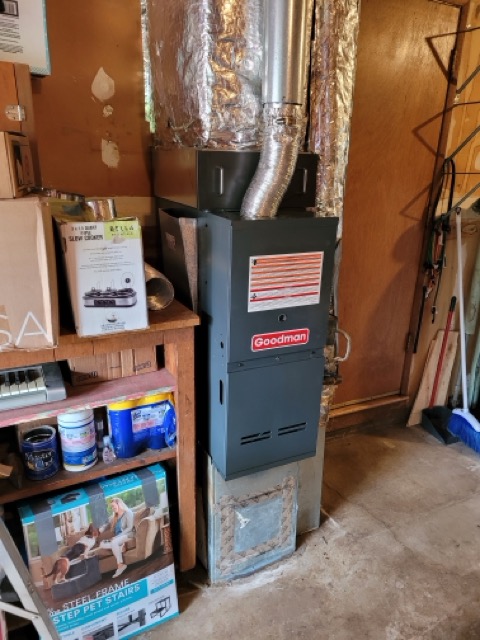
Symptoms of Carbon Monoxide Poisoning
Recognizing the symptoms of CO poisoning is crucial. Early signs include:
- Headaches
- Dizziness or lightheadedness
- Nausea and vomiting
- Shortness of breath
- Confusion or disorientation
- Chest pain
Severe exposure can result in unconsciousness, brain damage, or death. If you or your family experience these symptoms, evacuate the home immediately and seek medical attention.
How Carbon Monoxide Displaces Oxygen in the Air
CO’s impact isn’t limited to the body—it also affects the air you breathe. When released into a confined space, carbon monoxide displaces oxygen in the air. This makes the environment unsafe, especially for individuals with respiratory conditions, children, and pets.
The Behavior of Carbon Monoxide
- Heavier Than Air: Although commonly thought to mix evenly with air, CO is slightly heavier and tends to accumulate at lower levels, moving from the ground upward.
- Confined Spaces: CO buildup is particularly dangerous in basements, crawl spaces, or other areas with poor ventilation, increasing the risk of exposure.
Understanding this behavior highlights the importance of proper ventilation and the strategic placement of carbon monoxide detectors in your home.
The Importance of Carbon Monoxide Detectors
A carbon monoxide detector is your first line of defense against this invisible threat. These devices are designed to alert you to the presence of CO before it reaches dangerous levels.
Placement of Carbon Monoxide Detectors
For effective protection, it’s important to install detectors in the right locations:
- Living Space Hallway: Place at least one CO detector in the hallway outside sleeping areas to ensure you’ll hear the alarm if CO levels rise while you’re asleep.
- Low-Mounted Locations: Since CO tends to accumulate near the ground, detectors should ideally be placed low on walls or near the floor for early detection.
Testing and Maintenance
- Test your detectors monthly to ensure they’re working correctly.
- Replace batteries regularly and follow the manufacturer’s guidelines for replacing the entire unit, typically every 5-7 years.
Preventing Cracked Heat Exchangers and Carbon Monoxide Leaks
Preventive measures can significantly reduce the risk of a cracked heat exchanger and subsequent carbon monoxide leaks. Here’s what you can do:
Regular Inspections
- Have your heating system inspected annually by a qualified HVAC professional. They can check for cracks, corrosion, and other issues that may compromise the integrity of your heat exchanger.
- Systems older than 15 years should receive more frequent inspections, as they are more prone to wear and tear.
Maintain Proper Ventilation
- Ensure all vents and chimneys are clear of blockages that could trap combustion gases inside your home.
- Avoid storing items near the furnace or blocking airflow to the system.
Replace Air Filters
- Clogged air filters restrict airflow, causing the furnace to overheat and increasing the risk of a cracked heat exchanger. Replace filters every 1-3 months, or as recommended by your system’s manufacturer.
Monitor System Performance
- Pay attention to unusual noises, changes in efficiency, or uneven heating. These can be signs of a problem with your heat exchanger or overall system.
Upgrade Aging Systems
- If your furnace is nearing or over 15 years old, consider upgrading to a new, energy-efficient model. Modern systems are designed with improved safety features to reduce the risk of carbon monoxide leaks.
Signs Your Heat Exchanger Might Be Cracked
Recognizing the warning signs of a cracked heat exchanger is essential for protecting your home and family from carbon monoxide leaks. While some symptoms may be subtle, understanding what to look for can help you act quickly to resolve the issue.
Unusual Odors
A cracked heat exchanger can allow combustion gases, including carbon monoxide, to escape into your home. You may notice a faint smell of formaldehyde, which often accompanies these leaks. While carbon monoxide itself is odorless, this smell could indicate incomplete combustion or a breach in the system.
Soot or Rust Around the Furnace
Dark soot or rust near the furnace is a potential sign that your heat exchanger is not functioning properly. Soot can result from incomplete combustion, while rust may indicate excess moisture in the system, both of which can contribute to cracking.
Yellow or Flickering Flame
A healthy furnace flame should burn blue. If the flame appears yellow or flickers, it could be a sign that the furnace isn’t burning fuel properly, potentially due to a cracked heat exchanger.
Strange Noises
Popping, rattling, or banging sounds coming from your furnace may indicate a damaged heat exchanger. These noises are often caused by metal expanding and contracting abnormally due to a crack.
Physical Symptoms
If you or your family members experience frequent headaches, nausea, dizziness, or flu-like symptoms, this could be a sign of carbon monoxide exposure. It’s critical to evacuate the home and call a professional immediately if you suspect a CO leak.
Choosing the Right Professional for Inspections and Heat Repairs
Addressing a cracked heat exchanger or preventing one from occurring starts with hiring the right HVAC professional. A trained technician can identify potential issues, ensure your system is operating safely, and provide recommendations for heat repairs or replacement.
What to Look for in an HVAC Professional
- Experience with Heat Exchanger Diagnostics: Choose a technician who specializes in furnace repair and has experience inspecting heat exchangers for cracks or other defects.
- Certifications and Licenses: Ensure the technician is licensed and certified in HVAC services. Look for industry-standard qualifications, such as NATE certification.
- Customer Reviews: Research reviews and testimonials to find a professional known for reliability, honesty, and thorough inspections.
What to Expect During an Inspection
- A qualified technician will inspect the heat exchanger for visible cracks, rust, or corrosion.
- They may use specialized tools, such as a borescope, to examine hard-to-reach areas.
- The inspection should also include testing for carbon monoxide levels in your home and checking for proper ventilation.
When to Consider Replacement
If your furnace is over 15 years old or the heat exchanger is severely damaged, a replacement may be the most cost-effective and safest option. Modern furnaces are equipped with advanced safety features and energy-efficient designs, reducing the likelihood of future issues.
By understanding the signs of a cracked heat exchanger and working with a trusted professional, you can ensure your heating system operates safely and efficiently. Regular maintenance and inspections are essential for preventing dangerous situations and keeping your family safe from the invisible threat of carbon monoxide.
Why You Should Act Now
A cracked heat exchanger is not just a mechanical issue—it’s a safety hazard that can put your entire household at risk. Carbon monoxide poisoning is preventable, but only with proactive measures. By scheduling regular maintenance and heat repair, investing in carbon monoxide detectors, and replacing aging equipment, you can ensure your home remains safe and comfortable.
Key Takeaways
- Carbon monoxide is a deadly gas that binds to hemoglobin in the blood, cycling eight times while oxygen cycles once, depriving the body of oxygen.
- CO displaces oxygen in the air, with the potential to accumulate near the ground and move upward in confined spaces.
- Furnaces older than 15 years are at higher risk for cracked heat exchangers, making regular inspections essential.
- Install CO detectors in hallways near sleeping areas and maintain them regularly for reliable protection.
Your family’s safety is worth the investment in preventive care and heat repair. Don’t wait for symptoms of carbon monoxide poisoning to appear—act today to protect your loved ones from this silent threat.
A Top Rated HVAC Contractor



